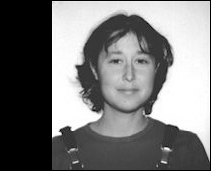Audrey P. de Koning
PhD, 2006, Genetics, UBC
MSc, 2002, University of British Columbia
BSc, 1999, University of Northern British Columbia

Audrey P. de Koning
PhD, 2006, Genetics, UBC |

| |
| Visit me: | Lab - Rm 3124, Biosciences Bldg. |
| Address: | c/o Department of Botany, University of British Columbia #3529-6270 University Blvd. Vancouver, British Columbia, Canada. V6T 1Z4 |
Phone: 1 604 822 2845
Fax: 1 604 822 6089
E-mail: apdk{at}interchange.ubc.ca
Highly modified plastids with reduced genomes are commonly found in parasites derived from photosynthetic ancestors. Presumably, such changes represent an adaptive response to the unique metabolic requirements of parasites; for example, since nutrients are garnered from the host, genes involved in photosynthesis are typically absent. The retention of plastids in such parasitic lineages suggests that the plastid can have a primary purpose other than photosynthesis. By characterizing the function of these reduced plastids, we can gain insight into what adaptations are important in the development of a parasitic lifestyle.
Helicosporidia are parasites that infect various invertebrates. These unicellular eukaryotes were first described almost a century ago, but are still amongst the most poorly understood eukaryotes. The first molecular data has recently emerged from this group and surprisingly shows that they are highly derived green algae. Although Helicosporidia are colorless and no plastid-like structure has been identified, their phylogenetic affiliation suggests that a cryptic organelle should be present, and indeed Helicosporidium possesses a plastid-type SSU rRNA. Based on what is observed in other organisms with cryptic plastids, we predict that plastid genome reduction represents both outright gene loss and relocation of organellar genes to the nuclear genome with concomitant targeting of those genes' products back to the plastid.
I have surveyed the nuclear genome of Helicosporidium sp. through sequencing of cDNAs, and have identified a number of plastid-targeted genes. These include some housekeeping genes, genes that implicate the plastid as a site for biosynthesis of fatty acids, amino acids, tetrapyrroles, and isoprenoids, and genes for proteins involved in sulfur metabolism.
The best-studied cryptic plastid to date is that of the malarial parasite, Plasmodium falciparum. While Plasmodium and Helicosporidium are both endoparasitic, they are unrelated and reduction of their plastids represents independent evolutionary events. We expected that retention and loss of plastid functions would have occurred differentially in these groups during their evolution from their photoautotrophic ancestors. A comparison of the inferred metabolic pathways in the Helicosporidium and Plasmodium plastids shows that Helicosporidium has several pathways that are be absent in Plasmodium. However, some typical plastid functions, such as photosynthesis, have been lost in both groups and probably represent convergent evolution associated with their shared lifestyle as parasites. This work is supported by scholarships from the Canadian Institutes for Health Research and by the Michael Smith Foundation for Health Research.
Lateral gene transfer between kingdoms can and does occur, but less is known about the scope of these gene transfers. Mechanistic details of how these transfers might occur are still unknown, but presumably eukaryotes acquire DNA through phagocytosis, and insertion occurs through local recombination or chance break-and-join events. Because higher animals possess such features as germ-soma cell line separation and their cells generally lack active phagocytosis, most prokaryote-to-eukaryote transfers are likely to involve protists. I sought evidence for lateral gene transfer in the genomes of protists, by looking for discordance between gene phylogenies and presumed organismal phylogenies. This work was supported through a scholarship from the Natural Sciences and Engineering Research Council of Canada.
2005. A cryptic plastid in Helicosporidium, a parasitic alga. International Society for Evolutionary Protistology. Melbourne, Australia.
2003 Plastid function in a parasitic alga: evolution where the sun don't shine. Society for Molecular Biology and Evolution. Newport Beach, USA.
2001 Lateral gene transfer from bacteria to protists. Society for Molecular Biology and Evolution. Athens, USA.
2000 Lateral Gene Transfer and Metabolic Adaptation in Protists. International Society for Evolutionary Protistology. Ceske Bujovice, Czech Republic.
I work in Patrick Keeling's Comparative Molecular Parasitology Lab in the Botany Department.
Our collaborators at the University of Florida have a fantastic webpage with excellent micrographs of Helicosporidia.
The Evolution Discussion Group meets every Friday at UBC.
Sequence databases and reams of useful tools and info can be found at the National Centre for Biotechnology Information (NCBI) and at the European Bioinformatics Institute (EBI).
A comprehensive list of phylogeny programs is provided by Joe Felsenstein at the University of Washington.